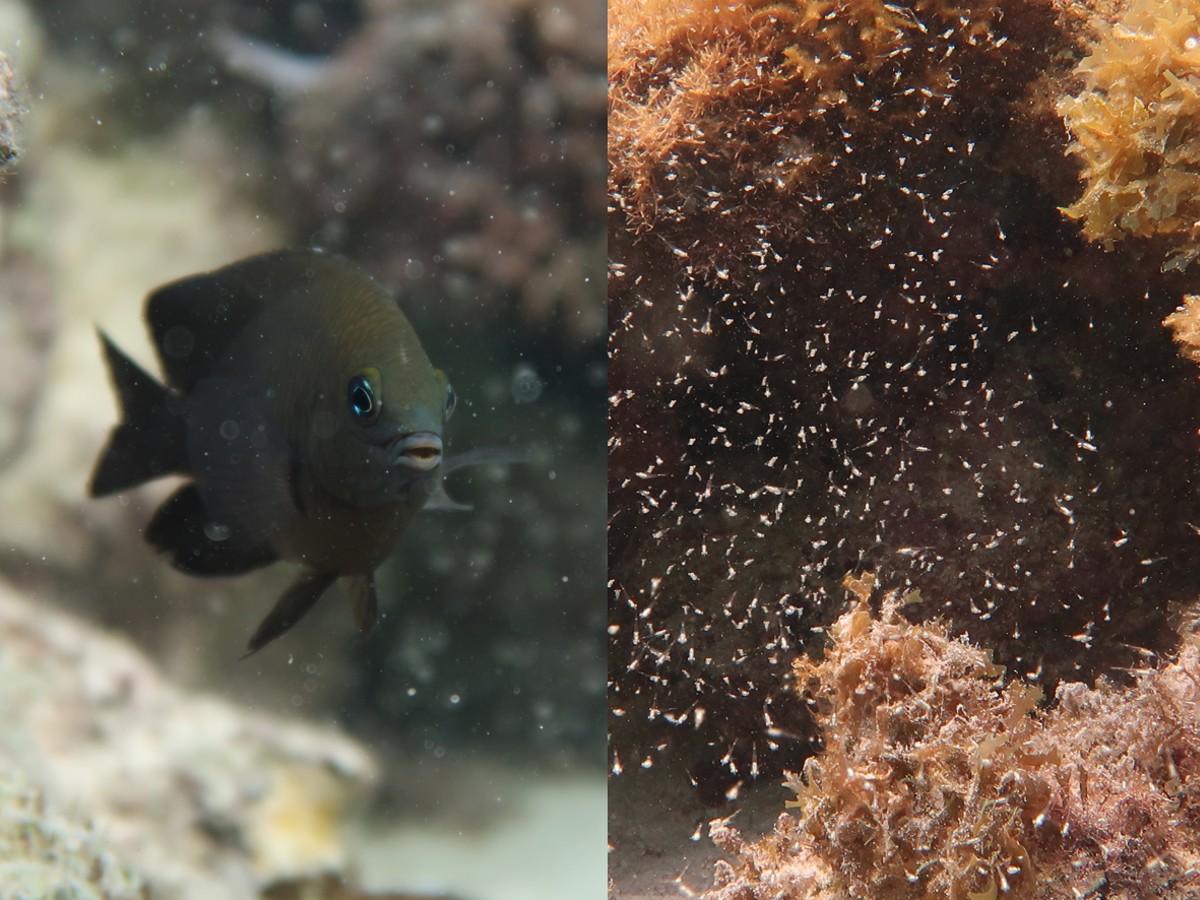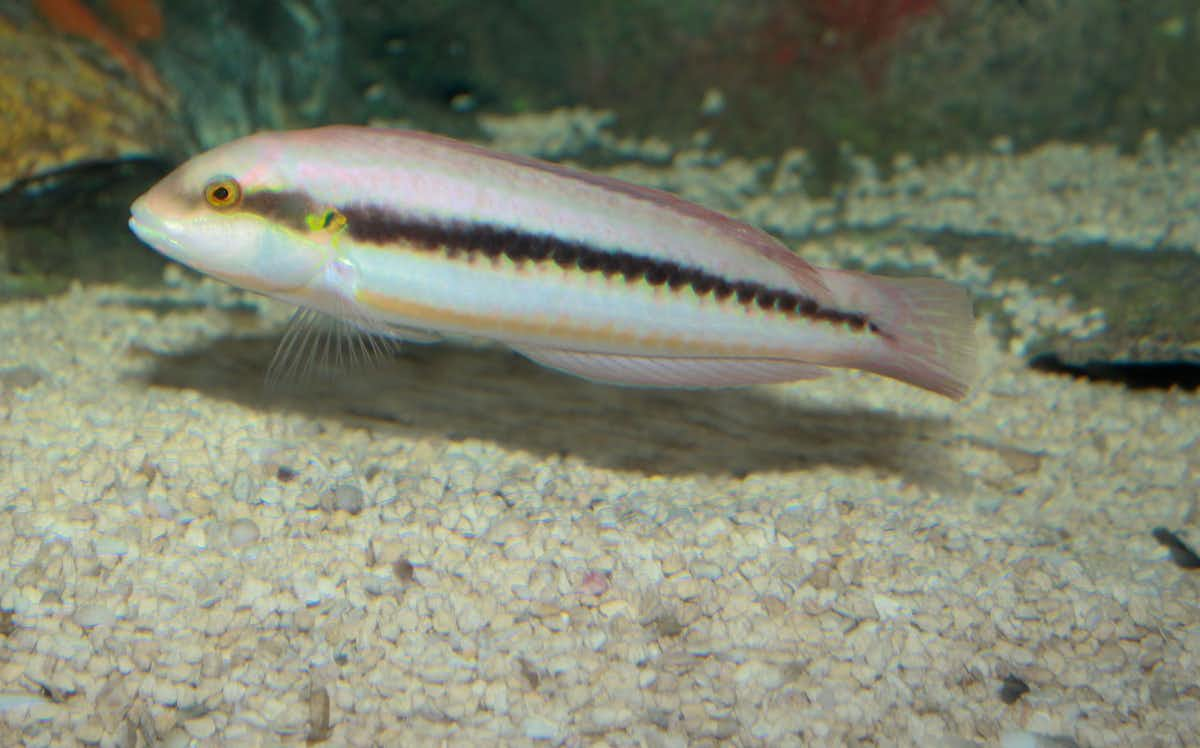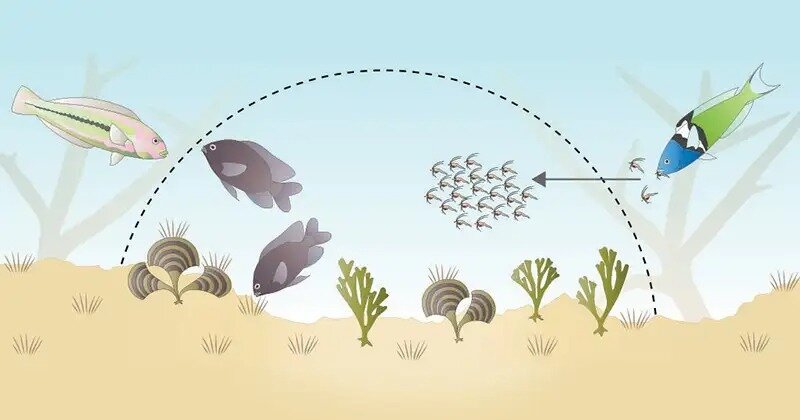11 Dec 2024

Tired Earth
By The Editorial Board

Longfin damselfish attending its farm. Photo: Paul and Jill
While humans have domesticated various plants and animals, these relationships are surprisingly rare in other species. Although some insects (including ants, beetles, and termites) have been observed domesticating fungi, few other examples exist outside the insect world. And as for an animal domesticating another animal, no such occurrences have been observed in nature. Until now.
According to a new study published in Nature, longfin damselfish have “swarms” of tiny crustaceans called mysid shrimps floating above their farms. The study authors found this quite unusual, since most farming damselfish are pretty proud of their produce and will chase away anything that ventures near their farm. Curious to find out why these species associated with one another, the researchers then decided to try to find out what was really going on.

Adult damselfish turn black from yellow. On the right are the tiny shrimp the species has domesticated. Source: Nature
First, to see why mysid shrimps and farming damselfish are regularly found together, the scientists ran a series of 30 metre swims along the reef, and each time they saw mysid shrimps, they checked whether there were farming damselfish or other fish species nearby.
They found that these shrimps were much more likely to be found near longfin damselfish than other species, so as a next step they wanted to find out whether the mysids specifically seek out their damselfish masters. To do so, they collected mysid shrimps from the field, brought them into the lab and exposed the mysids to water soaked with different things to find out whether they avoid the smell of a predator or, instead, are attracted to the smell of a farming damselfish.
Based on their findings, the researchers established that the mysids shrimps were attracted to the longfin damselfish – a behavior that saved them from predators, by the damselfish.

The Smithsonian’s Carrie Bow Cay Marine Research Station off the coast of Belize, where the research was conducted. Photo: Hamilton College
Since many fish devour mysid shrimps, the researchers ran an experiment to see if longfin damselfish provided protection to the mysids on their farm. To do this, they placed mysid shrimps in a clear plastic bag and placed the bag either inside or outside a farm.
The result of the experiment was revealing. The scientists found that when placed outside a farm, other fish tried to eat the mysid shrimps, but when inside the farms, any fish that tried to come close to the bag was chased off by the longfin damselfish. This meant the mysids were seeking out the damselfish to provide protection from predators.

Slippery Dick Wrasse is a common predator of mysid shrimps. Brian Gratwicke
At this point, the only question that remained was whether the mysid shrimps provide a benefit to the longfin damselfish. Since the damselfish eat the algae they farm, the researchers presumed the waste of the mysid shrimp floating above the damselfish’s farm might act as fertiliser for the algae they farm.
They tested the hypothesis by looking at the quality of the algae on damselfish farms that had mysid shrimp around versus the ones that didn’t. They also examined the body condition of damselfish that did, or did not, have mysid shrimps on their farms.
The scientists found that farms with mysid shrimps had higher quality algae, and the shrimps were also in better condition.

The protected area created for mysid shrimp by the longfin damselfish. Source: Phys.org
Based on their findings, the study authors concluded that longfin damselfish have indeed domesticated mysid shrimps – something that has previously only been observed with humans. The longfin damselfish provide a safe refuge for the mysid shrimp, who in exchange provide the damselfish with fertilizer for its farm.
The findings are fascinating because they demonstrate a series of events similar to the ones that led to our domestication of species such as dogs, cats, horses or chickens.
Source : earthlymission.com
Comment